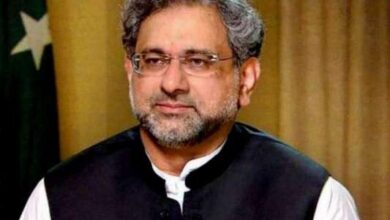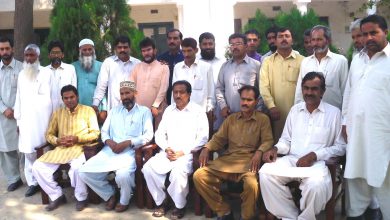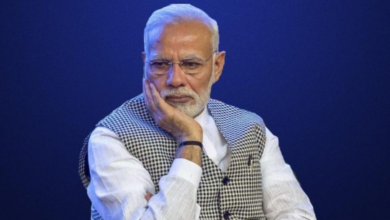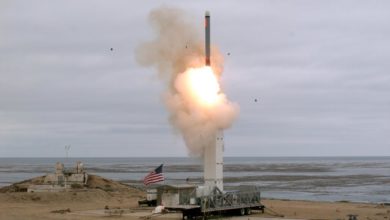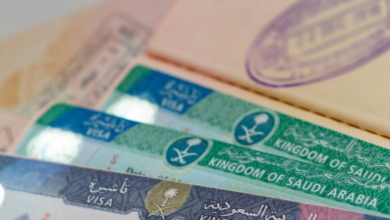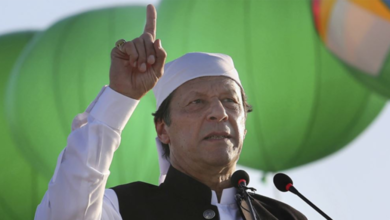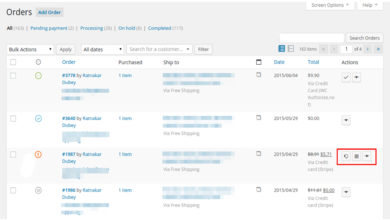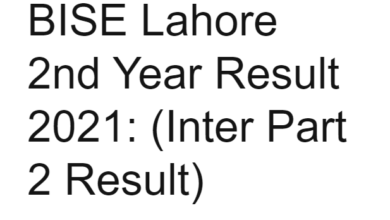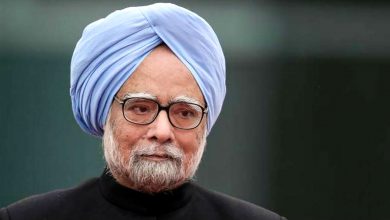Date of Birth:
ISLAMABAD: Jinnah Punja and his wife Mithi Bai, who lived in the Wazir Mansion building in Karachi, gave birth to a baby boy on December 25, 1876, whom his parents called Muhammad Ali Jinnah, and Muslims in the subcontinent named him Quaid-e-Azam Shouted.
Study:
Muhammad Ali Jinnah, a promising son who completed his primary education with distinction, was sent to Britain for higher studies by his father in 1891. Quaid-e-Azam was formerly wed to his very young beloved Amy Bai.
Joined Politics:
In 1896, he completed his law degree and moved back home. In politics and activism, the Quaid-e-Azam engaged in and entered the Congress in 1906.
After seven years’ involvement with the congress, in 1913, at the demand of Muslim leaders Sir Aga Khan, Allama Iqbal and Chaudhary Rehmat Ali, the Quaid-e-Azam took over the tricks of Hindu leadership. Put the bull’s stain.
Freedom:
Muhammad Ali Jinnah, due to his foresight, understanding, political foresight and perseverance, not only moved the British but also succeeded in achieving an independent state on August 14, 1947, freeing the Muslims from the shackles of Hinduism.
Death:
Quaid-e-Azam Muhammad Ali Jinnah, Allama Iqbal’s dream and the aspirations of the Muslims met Pakistan on September 11, 1948 at the age of 71, just a year after the establishment of Pakistan in practice.
It seems as if Quaid-e-Azam entered the world for the establishment of Pakistan and turned his back on the world as soon as he fulfilled his duty.
Muhammad Ali Jinnah was the head of the All-India Muslim League from 1913 until the independence of Pakistan on August 14, 1947. He was the first Governor General of Pakistan from the formation of Pakistan until his death.
The whole nation expresses its devotion and love for Quaid-e-Azam Muhammad Ali Jinnah.
Mazar-e-Quaid:
From September 1948 to February 1960, the shrine of the Father of the Nation remained under a canopy. Mazar-e-Quaid is a flat plot of land of 132 acres. At that time about two lakh refugees had set up huts on this area. But the people soon vacated the place for the shrine of their leader.
A total of four maps were prepared for the shrine at that time, one by Turkish architect A. Wasifi Agli, the other by Nawab Zain Yar Jang, and the third by British architect Raglan Square. These three maps were rejected on technical grounds and finally in December 1959, at the request of the Mother of the Nation, Fatima Jinnah, the task of preparing the maps was given to another architect, Yahya Merchant.
The main design work of the shrine was completed on January 28, 1960 and the construction work was formally started on February 8, 1960. On July 31, 1960, the then President Field Marshal General Muhammad Ayyub Khan laid the foundation stone of the shrine.
The main structure of Mazar-e-Quaid was completed on May 31, 1966, while the work of decorating the building with marble was completed on June 12, 1970.
The construction of the shrine cost Rs. 1.48 crore, which was a hefty sum at that time. The total area of the shrine is 132 acres, the central area is 61 acres while the sides are 55 acres.
The 81-foot-tall lantern was erected in December 1970 as a gift from Chinese Muslims. In 2017, to strengthen the friendship once again, China gifted a chandelier worth Rs. 220 million, which was installed at Mazar-e-Quaid.
Mazar-e-Quaid is one of the finest buildings in Pakistan due to its unique building and untouched architecture. All materials for the construction of the shrine were procured from domestic sources.
The building of the shrine brings particular importance to the Quaid’s nature, status and Islamic architecture.
After death:
Jinnah’s daughter Dina Wadia lived in India before moving to New York permanently after independence. In the 1965 presidential election, the mother of the nation, Fatima Jinnah, decided to run for the presidency on behalf of Ayyub Khan’s opposition parties, but failed to win (even today, according to many political analysts, the election was rigged).
Jinnah’s house in the Malabar Hills of Bombay is now managed by the Indian government, but Pakistan and India are embroiled in a dispute over its ownership. Jinnah had requested Prime Minister Nehru to provide government protection to the house in the hope that Jinnah would one day visit Mumbai. Proposals to convert the building into a Pakistani consulate have also been circulating, but Dina Wadia has also claimed ownership of the building. Said. This process sparked a debate in Pakistan about Jinnah’s cult. Wali Nasir says, “Although Jinnah was born Ismaili (Shia) and confessed to be twelve Imams (Shia), he apparently did not follow the religion.” In 1970, Hasnain Ali Ganji Walji made a legal claim that Jinnah had converted to the Sunni sect, but the High Court rejected it and in 1976 ruled that Jinnah’s family should be Shia. According to Khalid Ahmed, a journalist, Jinnah was opposed to sectarianism and “Jinnah struggled to bring the Muslims of India to a basic Islamic identity, not on a divided sectarian basis.” Ahmed cites a unique Pakistani court ruling that reads, “Jinnah was a secular Muslim, so he does not fall into the category of Shia Sunni.” And in 1984, Liaquat H. Merchant upheld the decision, saying that “Jinnah was neither a Sunni nor a Shiite, but a simple Muslim.”
Heritage and historical perspective
Jinnah’s legacy is Pakistan. According to Mohi-ud-Din, “Jinnah’s respect and importance in Pakistan will remain the same as that of George Washington in the United States.” The significance of Jinnah in establishing Pakistan is a historical one and cannot be measured. “
Stanley Wolpert, in a speech in his honor in 1998, called him the greatest leader of Pakistan.
Just as Gandhi could not be born easily in India, so no Jinnah can be born in Pakistan.” “As long as Jinnah was alive, he could have persuaded and even forced the regional leaders to agree on joint trade, but after his death, due to lack of consensus, political power and economic means turned to controversy,” Malik writes. ۔ According to Mohi-ud-Din, “Jinnah’s death deprived Pakistan of a leader who could maintain a balanced and democratic government. A leader free from corruption can be attributed to the loss of independence very soon after independence.
Jinnah’s image is present on all Pakistani currencies and many government agencies are named after him. Karachi’s old airport, Quaid-e-Azam International Airport, is now known as Jinnah International Airport, the busiest airport in Pakistan. Turkey’s largest highway is named after Jinnah Street, while a road in Tehran is named after the Muhammad Ali Jinnah Expressway. In 1976, the Iranian royal government issued a commemorative stamp commemorating Jinnah’s birth date. A portion of Devon Avenue in Chicago, USA, is named after “Muhammad Ali Jinnah.” The Mazar-e-Quaid is a popular public site in Karachi. The Jinnah Minar was built in memory of Jinnah in Guntur, Andhra Pradesh.
There is no shortage of scholars researching Jinnah in Pakistan, Akbar said. S. According to Ahmed, the work of local writers is not very popular abroad because Jinnah is rarely criticized in his work. According to Ahmed, books abroad say that Jinnah used to drink alcohol, while in Pakistan this has been omitted from books. According to Ahmed, exposing the story of alcoholism would damage Jinnah’s Islamic identity, but those who talk about it say that Jinnah withdrew from it in the latter part of his life.
According to historian Ayesha Jalal, Jinnah’s personality is exaggerated in Pakistan, while in India he is viewed negatively. According to Ahmed, “Jinnah is the most infamous figure in the new history of India.” Many in India see him as a land-dividing ghost. He was not a supporter of partition. It was the stubbornness of the Congress leaders who did not agree to share power with the Muslims. According to him, Jinnah’s demand for Pakistan was only to give maximum political rights to the Muslims. LK Advani also praised Jinnah, which caused a stir in his Bhartiya Janata Party.
People in the West are also somewhat influenced by Sir Richard Attenborough’s role in the 1982 Gandhi film about Jinnah. The film was made to pay homage to Nehru and Mountbatten and was also supported by Nehru’s daughter Indira Gandhi. In this film, Jinnah’s character (written by Ailaq Padasi) is portrayed as a man who seems to be jealous of Gandhi. Padmasi later admitted that Jinnah’s character was not portrayed in a historical context. In an article on Pakistan’s first Governor General, historian RJ Mori writes that Jinnah’s central role in the establishment of Pakistan is universally recognized. Wilpert summarizes Jinnah’s influence on the world:
Some are changing the course and some are shifting the world map. Very few of them take credit for building a country on a new nationality. And Jinnah did all three. Have shown “











